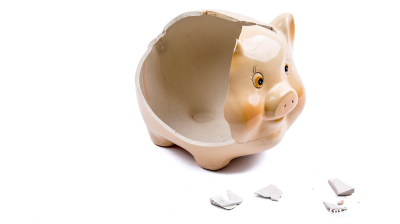Ukraine’s slow post-war economic recovery and growing fiscal demands have placed new pressure on the government in Kyiv to secure additional international funding, with analysts at ICU warning of a looming $10bn to $15bn shortfall for 2026.
ICU analysts said in a report the government will struggle to “increase the stock of available resources, capital and labour,” noting that real GDP growth is forecast to slow to 2.5% in 2025 and only marginally improve to 2.8% in 2026.
“The economy will need to rely on already available resources only, and they are getting more and more scarce,” the group said in its Macro Insight report, published on July 16.
Agriculture, industrial output, and construction all continue to underperform, with consumer demand now the primary engine of growth.
Agriculture is usually one of the nation’s cash cows, but the forecasts across the region are for a poor harvest. Russia is also facing the worst harvest in nearly five years this season.
“The growth in value added will be mostly driven by consumer demand and not by investment demand, which is still constrained, especially given that Russia significantly upscaled its drone/missile attacks on regions far behind the frontline,” ICU said.
Budget spending remains dominated by defence and national security needs, accounting for 60% of central government expenditures. Despite substantial pre-financing from allies, ICU warned that “the current commitment represents a floor to external funding” and that an additional $10bn to $15bn “will be the key challenge within the current IMF programme.”
ICU expects the IMF to revise its baseline assumptions during its next programme review in December, calling the existing fiscal forecasts “unrealistic.” The lender is likely to adopt “more conservative assumptions admitting the need for more external funding,” analysts said.
The Ukrainian government is expected to increase borrowing from domestic banks to plug this year’s budget gap, but ICU cautioned that “the room for further investment in 2026 will be extremely limited if available at all.” Ukraine’s public debt is forecast to rise to 105% of GDP by end-2025.
Meanwhile, inflation has begun to decelerate, falling to 14.3% in June from 15.9% in May. ICU projects inflation to end the year at 8.2%, revised up from a previous estimate of 7.6%, largely due to high food prices following another poor harvest.
The National Bank of Ukraine is expected to respond cautiously, with only two interest rate cuts of 50bp each expected by year-end. Analysts also forecast a strengthening of the hryvnia through 2025, followed by a modest depreciation in 2026, assuming no major FX shocks.
“The NBU will not open the way to repatriation of FDI and repayment of loans until the hryvnia gets much weaker,” ICU said. “And a much weaker hryvnia is definitely not a baseline scenario for the next 18 months.”
Opinion

Ukraine facing a financial cliff as IMF warns Ukraine may need an extra $20bn of external funding in 2025
The International Monetary Fund (IMF) has concluded that Ukraine’s financing needs for 2026 and 2027 could be as much as $20bn higher than the government in Kyiv’s own estimates, as negotiations begin on securing a new aid package.

COMMENT: What were Russian drones doing in Poland?
With no clear explanation from Moscow, theories have proliferated over how and why more than a dozen Russian drones crossed into Poland on September 10—and what this means for European security.

COMMENT: Need and loathing in Russia – unpacking the labour migration paradox
Central Asian guest workers face growing hardship.

COMMENT: France’s instability risks weakening Europe at a critical moment
The French government fell on September 8, facing a 5.8% of GDP budget deficit it can neither fund nor reduce, plunging the Fifth Republic into yet another crisis at a critical time for Europe.



